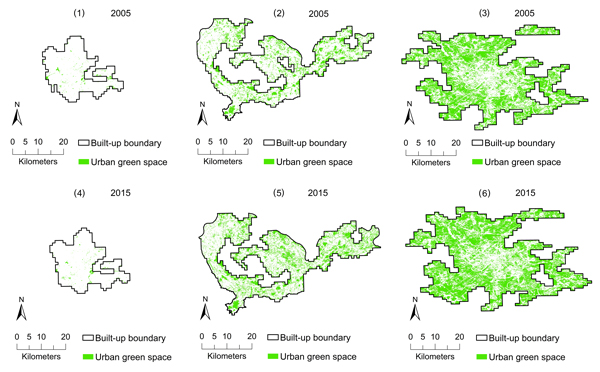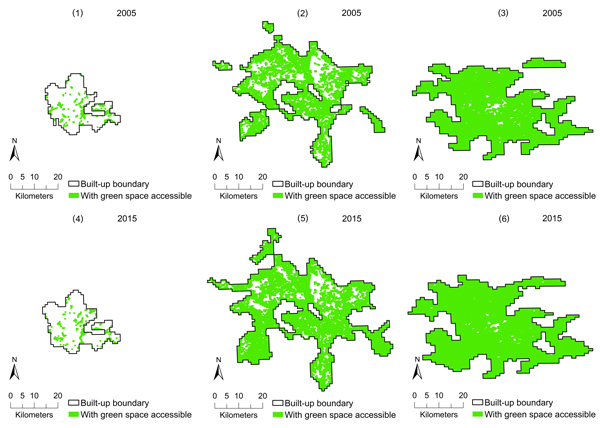Recently, Ph.D. Candidate Huang Conghong and the co-authors published a paper entitled “Green Spaces as an Indicator of Urban Health: Evaluating Its Changes in 28 Mega-Cities” on Remote Sensing. Associate Professor Jun Yang is the corresponding author of this paper.
This paper assessed the change of health benefits generated by urban green spaces in 28 megacities worldwide between 2005 and 2015 by using availability and accessibility as proxy indicators. The results showed that the mean availability of urban green spaces (Percentage of urban green spaces) in these megacities increased from 27.63% in 2005 to 31.74% in 2015. The availability of urban green spaces in these megacities were highly correlated with the climate factors. Megacities with lower AMT and higher AP had significant higher availability of urban green spaces than others

Figure 1. Distributions of urban green spaces in 2005 and 2015, examples of: the least green (Karachi) (1), median green (Shenzhen) (2), and greenest (Moscow) (3) megacity in 2005; and the least green (Karachi) (4), median green (Shenzhen) (5), and greenest (Moscow) (6) megacity in 2015.
The mean accessibility of urban green spaces increased from 65.76% in 2005 to 72.86% in 2015. Similar to availability, accessibility of the 28 megacities were significantly affected by climate factors but not socio-economic factors. Megacities with lower AMT and higher AP had significantly higher accessibility of urban green spaces than others.

Figure 2. Distribution of urban green spaces (≥1 ha) and their 300 m buffered areas, examples for megacities of: low (Karachi) (http://www.mdpi.com/2072-4292/9/12/1266 1), median (Delhi) (2), and high (Moscow) (3) values of accessibility indicator in 2005; and low (Karachi) (4), median (Delhi) (5), and high (Moscow) (6) values of accessibility indicator in 2015.
The results showed that overall both availability and accessibility of urban green spaces in these megacities increased between 2005 and 2015. It is inferred that more residents in these cities enjoyed the health benefits generated by urban green spaces in this period.
Link: http://www.mdpi.com/2072-4292/9/12/1266